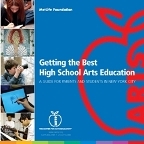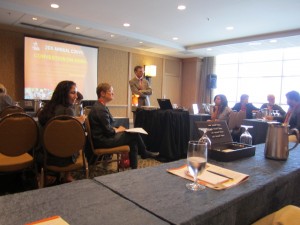
Maggie Guggenheimer
The Storyline Project
Posted by Dec 09, 2011

Maggie Guggenheimer
The Storyline Project is a great example of effective and inexpensive collaboration with valuable community outcomes.
Launched in summer 2009, the project had roots in an impromptu collaborative effort from the previous year. Charlottesville Parks & Recreation came to Piedmont Council for the Arts (PCA) for help painting a school bus to transport youth to recreation centers around town. Aware of our limited capacity, we reached out to another nonprofit, The Bridge Progressive Arts Initiative, for help.
Though similarly small, The Bridge had experience working with local artists on public art projects. With their expertise, PCA’s commitment to managing the project, and our shared enthusiasm for the possibilities, a new partnership was born.
Together, we coordinated a team of local artists and Parks & Rec summer camp students for the exciting challenge of painting what became known as the Fun Bus.
Read More

















































